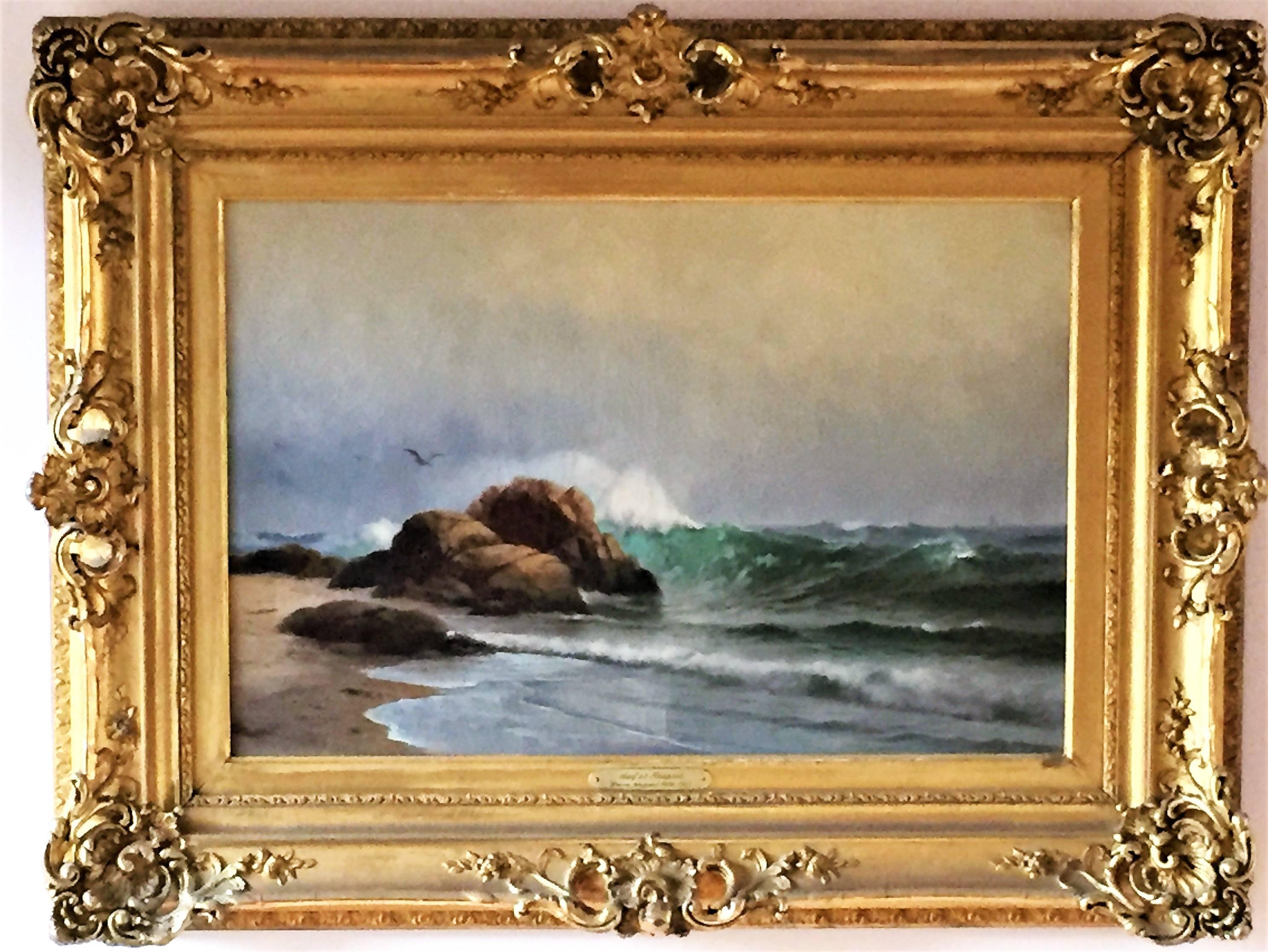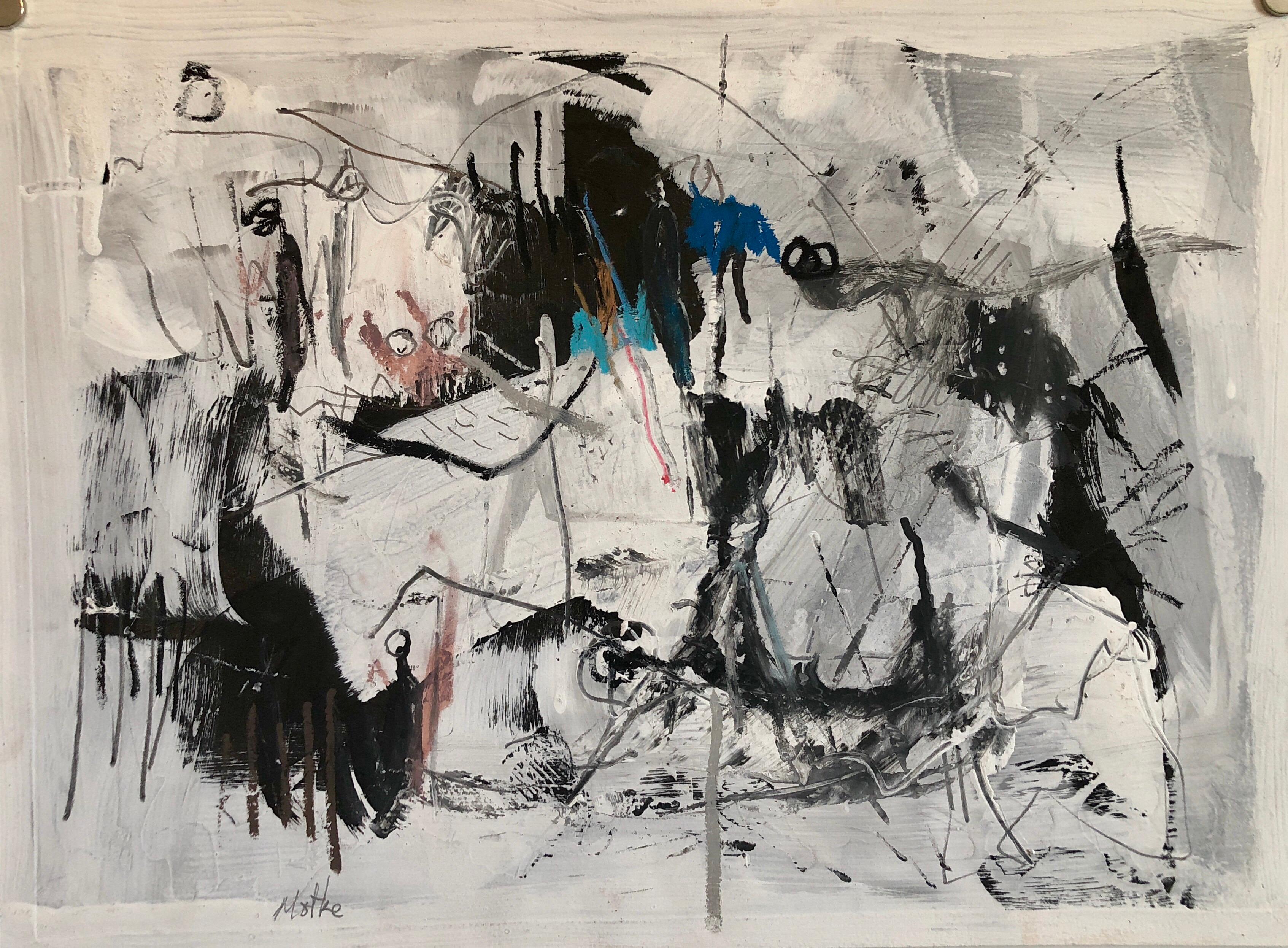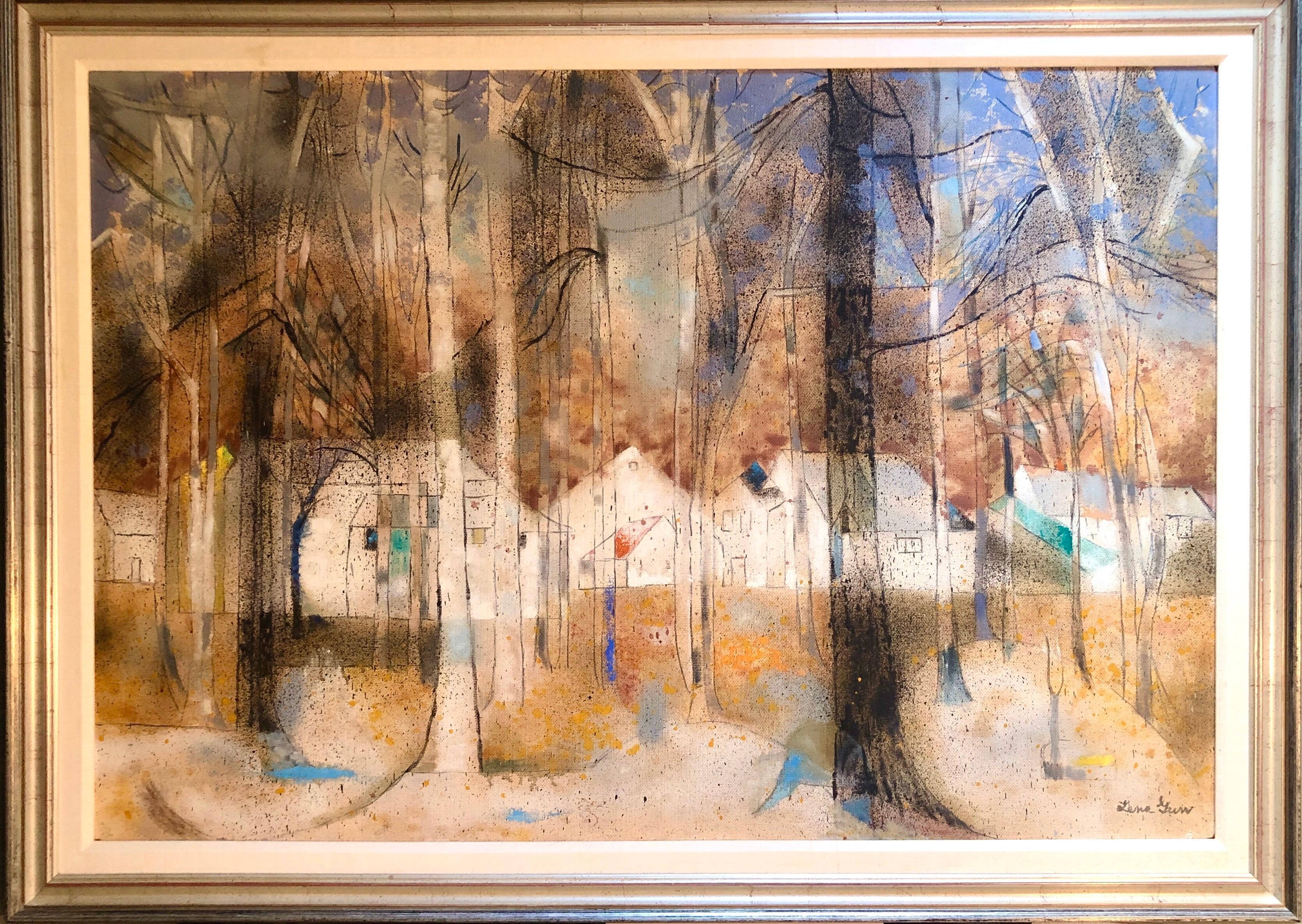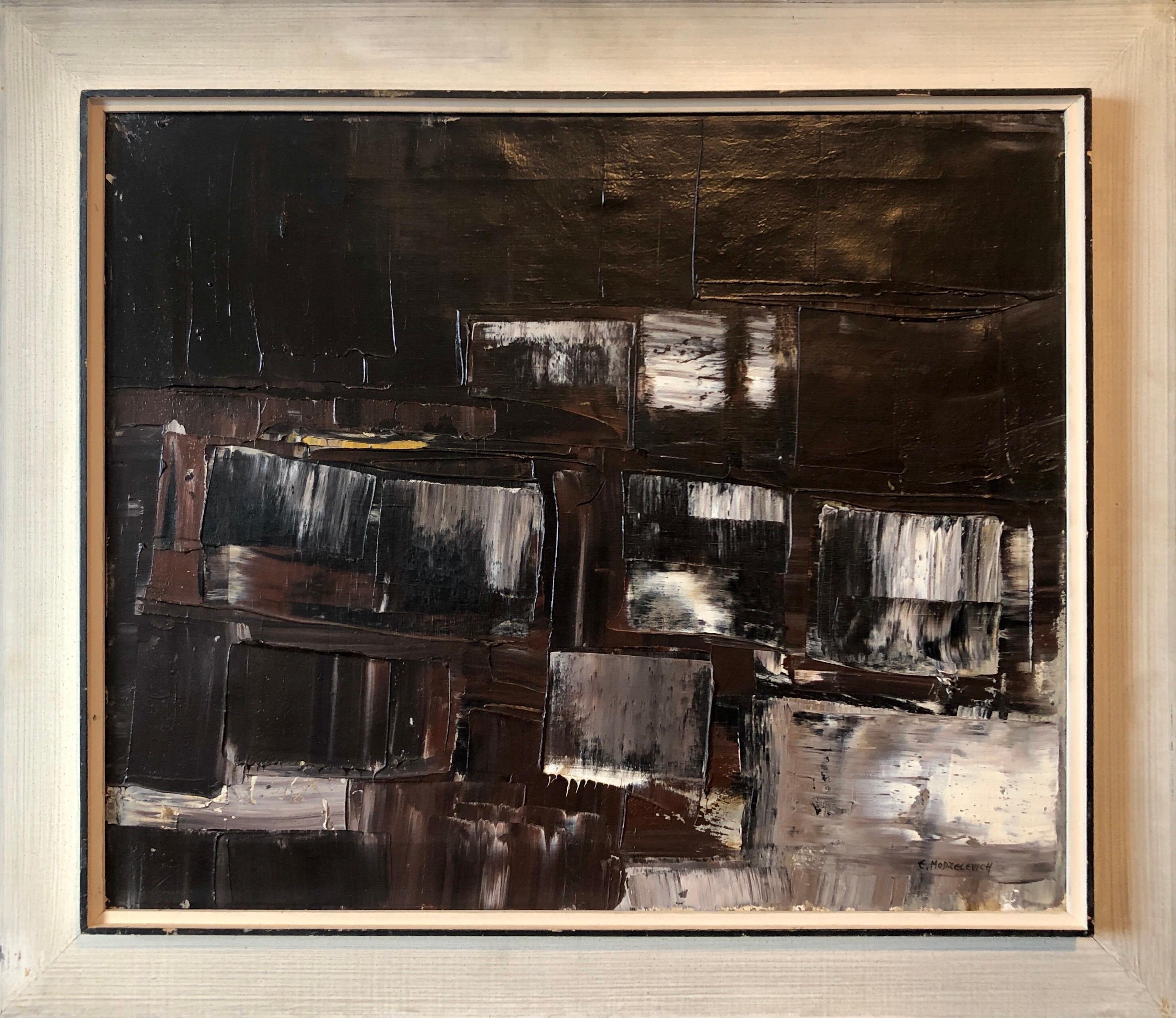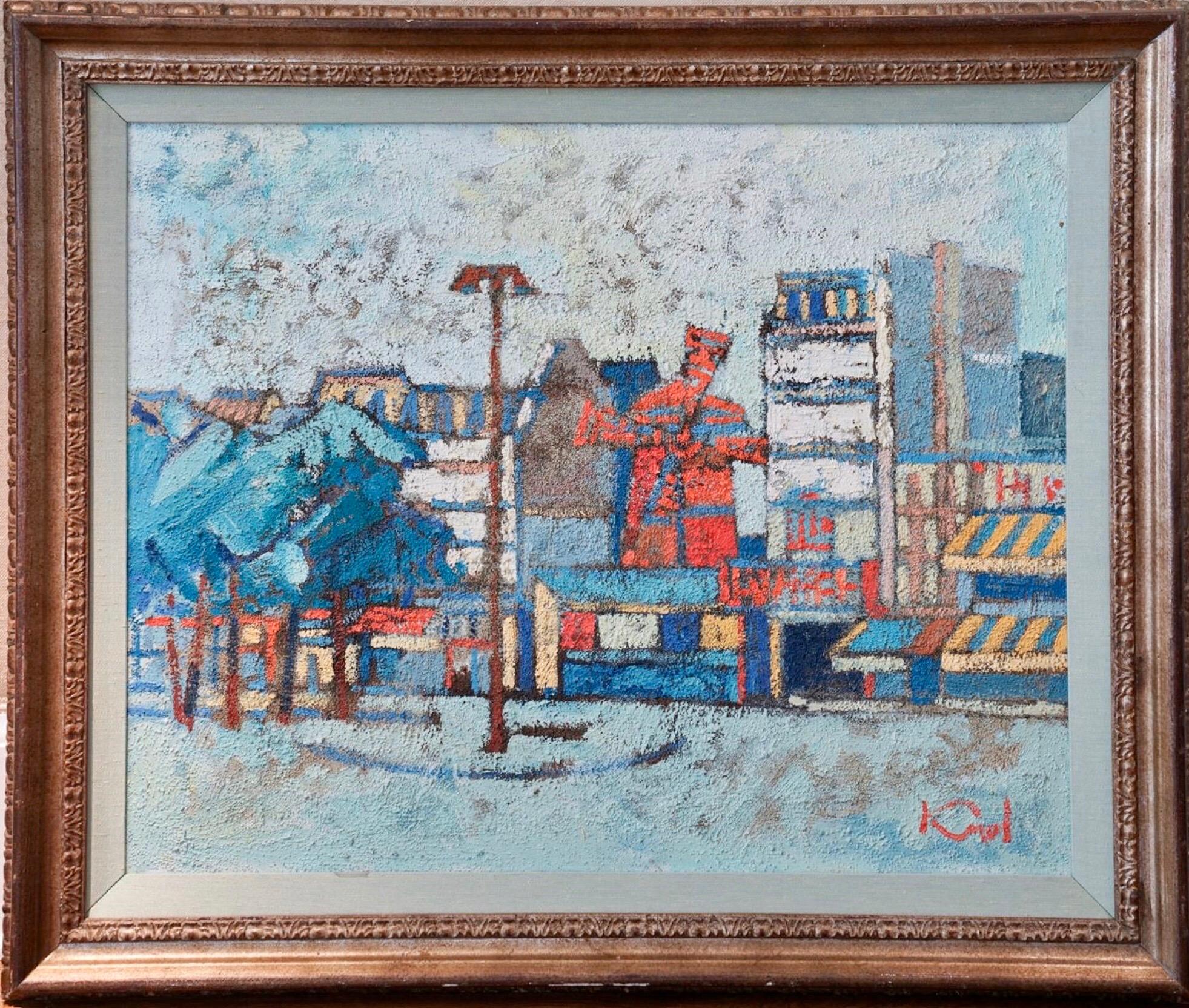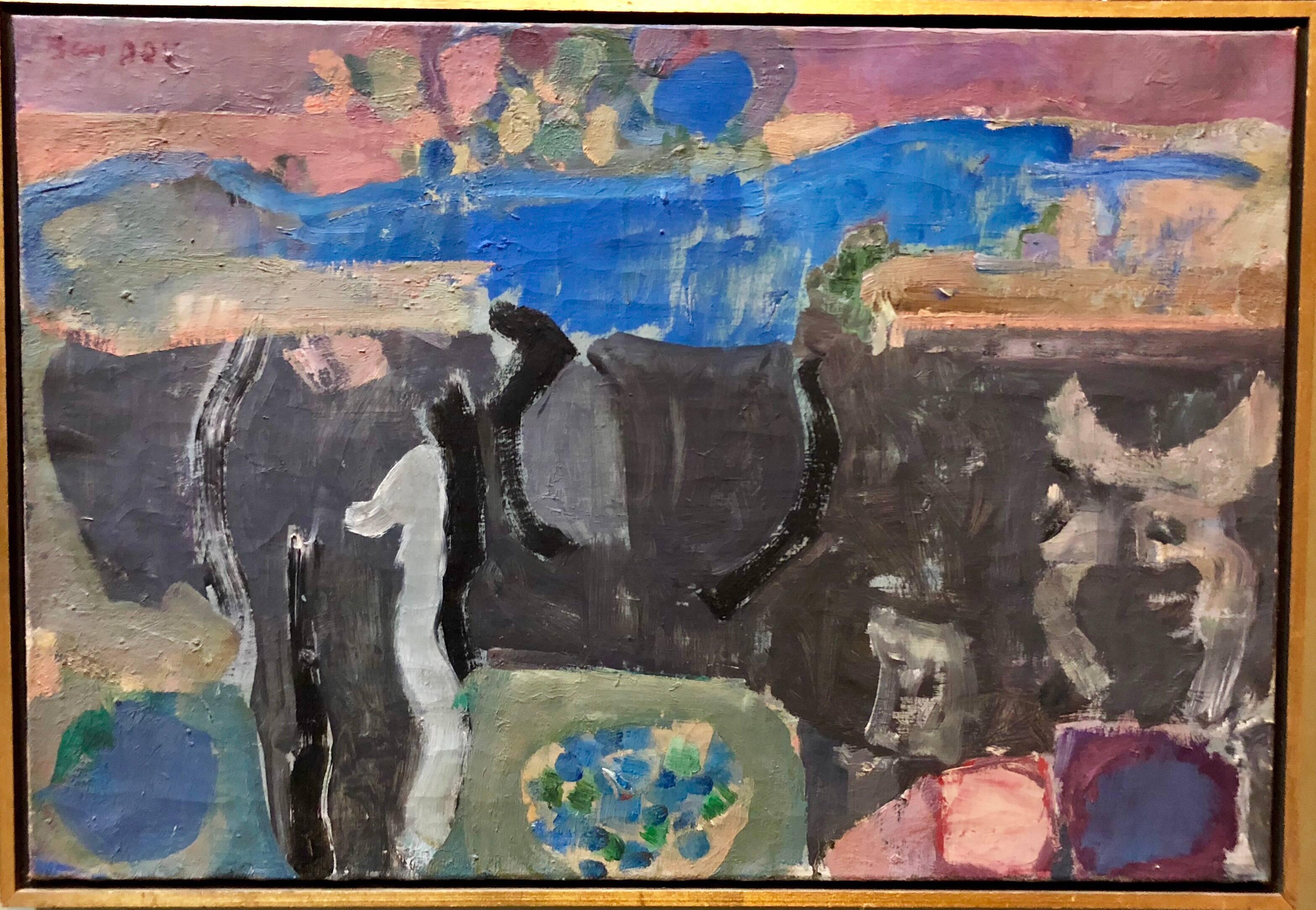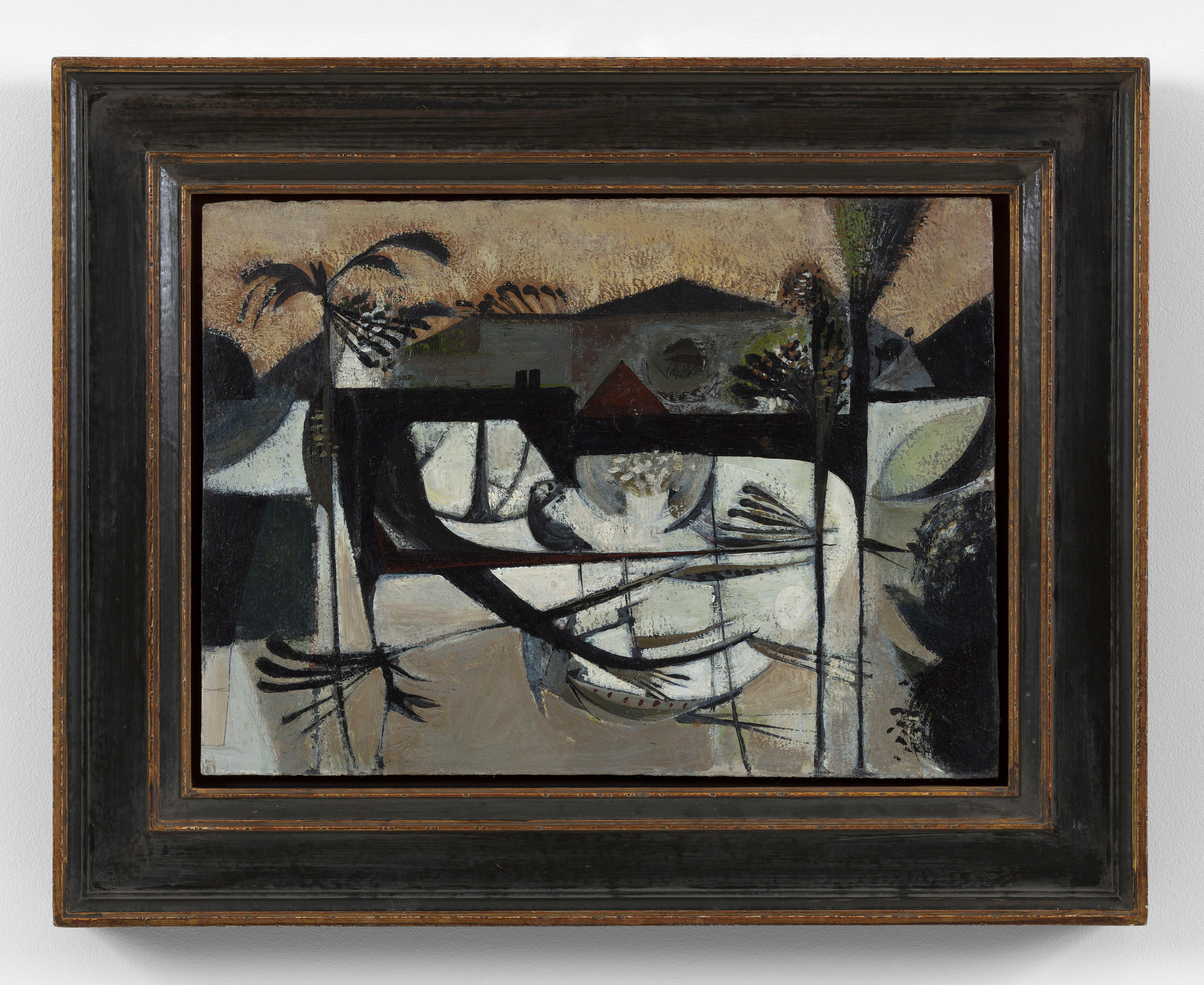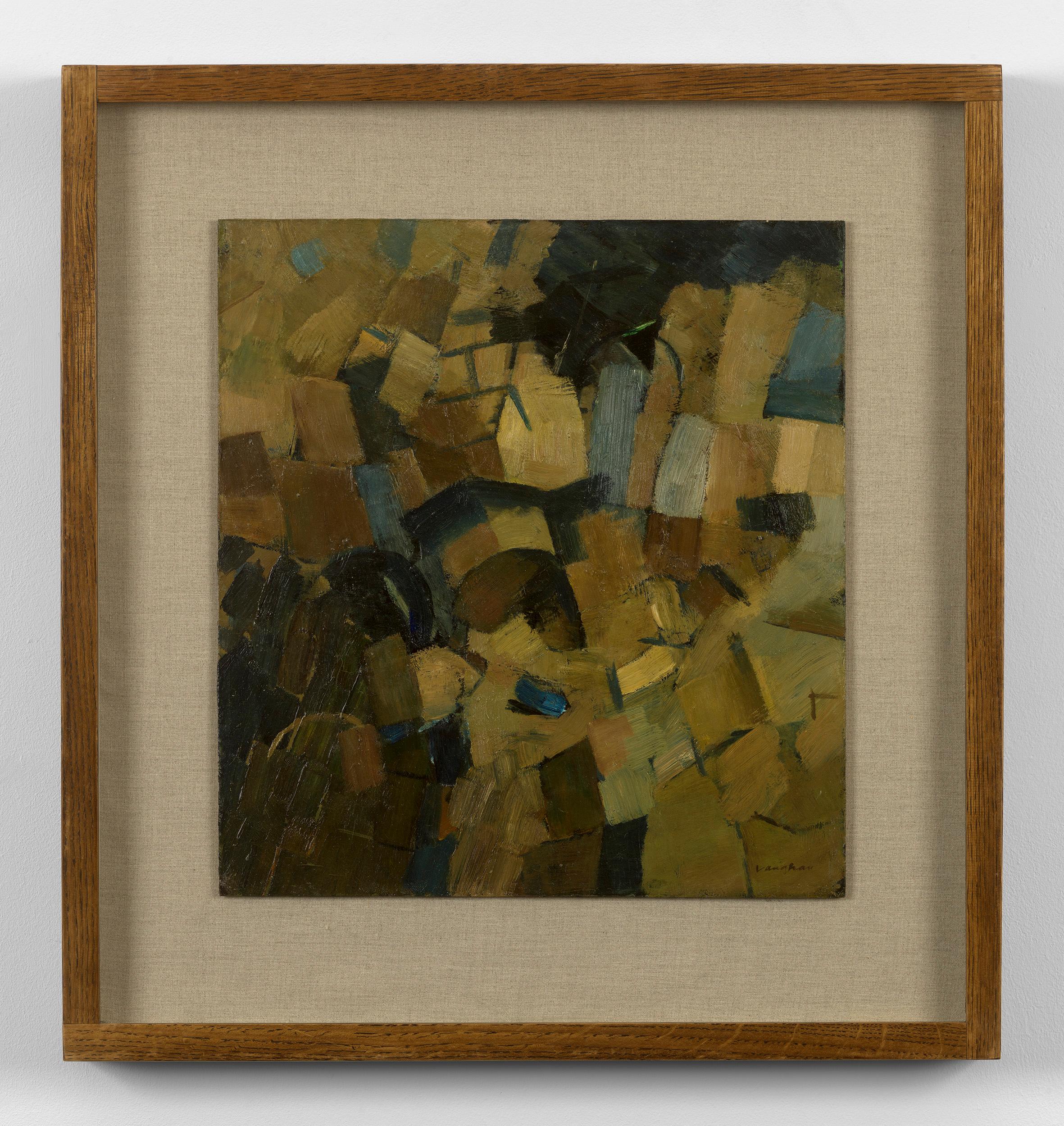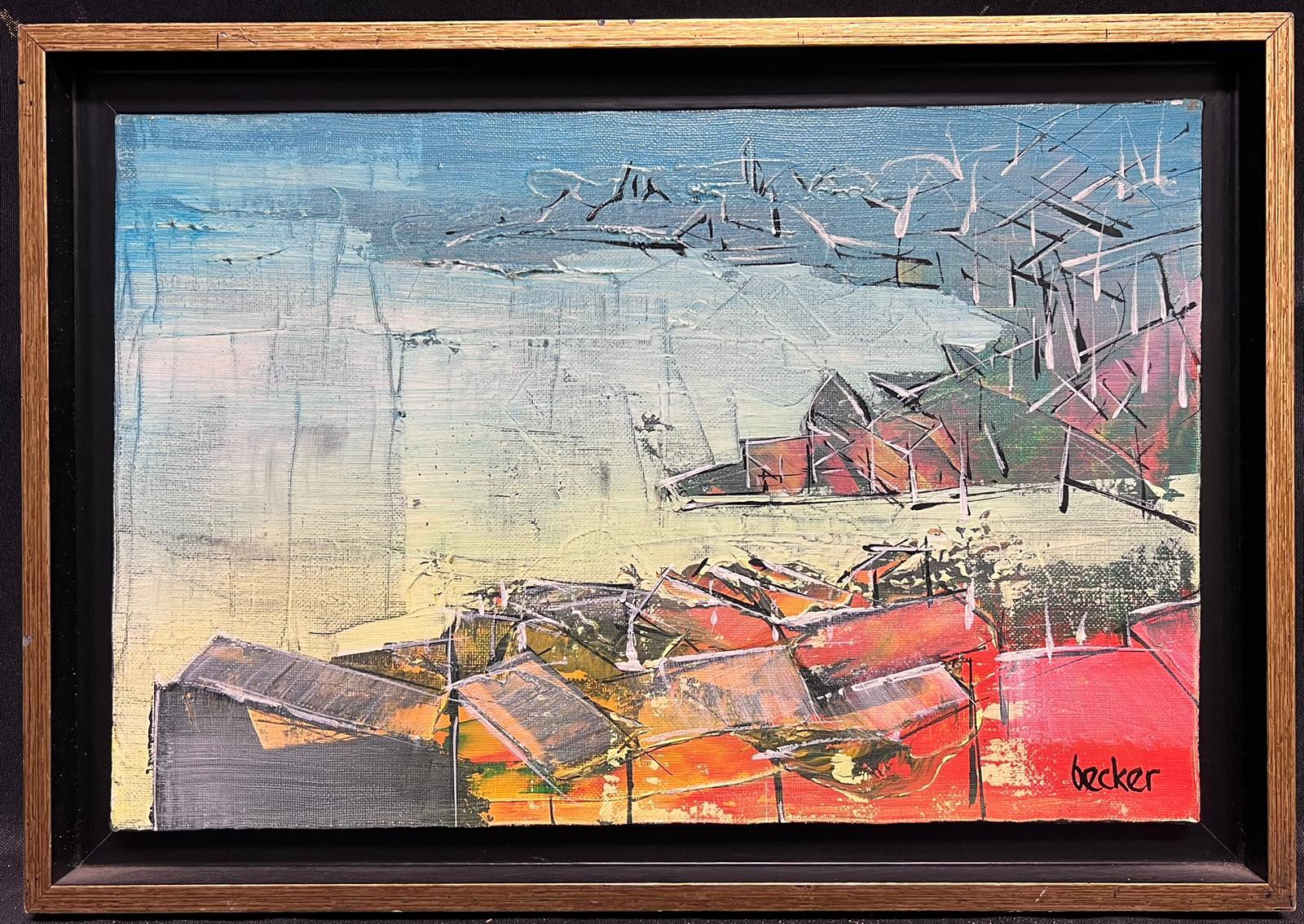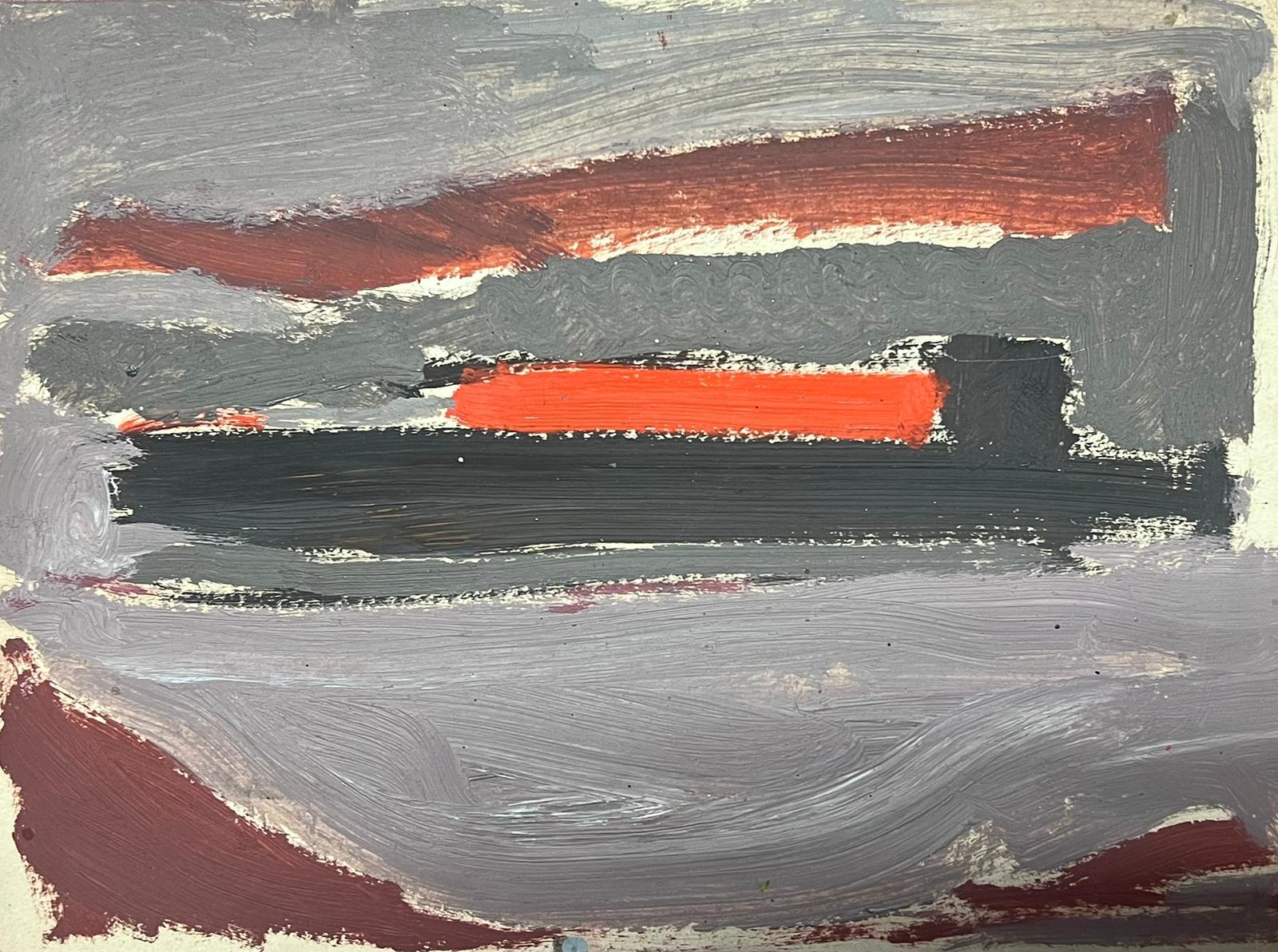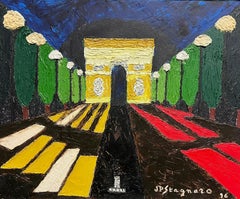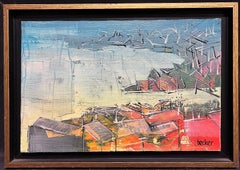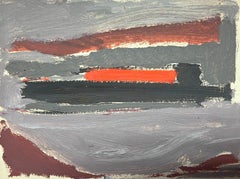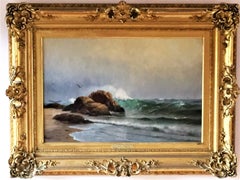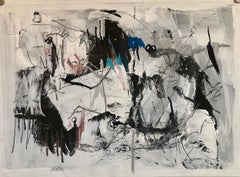
French Modernist 20th century Oil Painting Atmospheric Beach Seascape Sandy
View Similar Items
Want more images or videos?
Request additional images or videos from the seller
1 of 10
Lucien GondretFrench Modernist 20th century Oil Painting Atmospheric Beach Seascape Sandy
About the Item
- Creator:Lucien Gondret (1941, French)
- Dimensions:Height: 13 in (33.02 cm)Width: 18 in (45.72 cm)
- Medium:
- Movement & Style:
- Period:
- Condition:
- Gallery Location:Cirencester, GB
- Reference Number:1stDibs: LU509313262142

About the Seller
5.0
Platinum Seller
These expertly vetted sellers are 1stDibs' most experienced sellers and are rated highest by our customers.
Established in 1989
1stDibs seller since 2016
3,510 sales on 1stDibs
Typical response time: 2 hours
More From This SellerView All
- The Arc de Triomphe by Night 1990's French Modernist Thickly Painted OilLocated in Cirencester, GloucestershireThe Arc de Triomphe (by night) by Jean Pierre Stagnaro ( 1927 - 2013) signed oil on canvas, framed dated 96' inscribed verso framed: 14 x 17.5 inches canvas: 13.5 x 16.5 inches prove...Category
1990s Modern Landscape Paintings
MaterialsOil
- Framed British Abstract Composition 1998 Coastal Town LandscapeLocated in Cirencester, GloucestershireS.Becker signed oil on canvas, framed framed: 13 x 18.5 inches canvas: 11 x 16 inches provenance: private collection condition: very good and sound conditionCategory
Mid-20th Century Modern Landscape Paintings
MaterialsOil
- 20th Century German Modernist Oil Painting Grey and Red Sea LandscapeLocated in Cirencester, GloucestershireArtist: Elisabeth Hahn (German 1924-2021), Elisabeth Hahn was born in Dortmund, Germany, where she began her artistic studies. In 1953, she moved to Paris. She continued her studie...Category
20th Century Modern Landscape Paintings
MaterialsOil
- 20th Century German Modernist Oil Painting Black Grey White and Blue AbstractLocated in Cirencester, GloucestershireArtist: Elisabeth Hahn (German 1924-2021), Elisabeth Hahn was born in Dortmund, Germany, where she began her artistic studies. In 1953, she moved to Paris. She continued her studie...Category
20th Century Modern Landscape Paintings
MaterialsOil
- 20th Century German Modernist Oil Painting Brown Bridge In Red SkyLocated in Cirencester, GloucestershireArtist: Elisabeth Hahn (German 1924-2021), Elisabeth Hahn was born in Dortmund, Germany, where she began her artistic studies. In 1953, she moved to Paris. She continued her studie...Category
20th Century Modern Landscape Paintings
MaterialsOil
- 20th Century German Modernist Oil Painting Dark Grey Bridge Over Green RiverLocated in Cirencester, GloucestershireArtist: Elisabeth Hahn (German 1924-2021), Elisabeth Hahn was born in Dortmund, Germany, where she began her artistic studies. In 1953, she moved to Paris. She continued her studie...Category
20th Century Modern Landscape Paintings
MaterialsOil
You May Also Like
- Reed 22 November 09:54 - Modern Nature Oil Painting, Abstract, MinimalismBy Robert MotelskiLocated in Salzburg, ATRobert Motelski's paintings are exceptional visions of nature, visions of space which surrounds us. They tell about being, fate and passing. They depend on the season of year, the ti...Category
2010s Modern Landscape Paintings
MaterialsCanvas, Oil
- The Surf at NewportBy Warren W. SheppardLocated in Storrs, CTThe Surf at Newport (Rhode Island). c. 1906. Oil on canvas. 17 x 24 (framed 26 x 34). Lined; extensive craquelure; otherwise fine condition. Housed in an exceptional Louis XV (reviva...Category
Early 20th Century American Modern Landscape Paintings
MaterialsOil
$4,400 Sale Price20% Off - Israeli Motke Blum Modernist Abstract Expressionist Oil Painting Bezalel ArtistBy Motke BlumLocated in Surfside, FLMotke Blum was born in Racacun, Romania in 1925. Early in his childhood, the Blum family moved to Bucharest where they settled in a house situated near a circus. The circus would become young Blum's greatest love. He befriended several of the clowns and other performers and, when not painting or playing in clay, Blum could be found enjoying the company of these spirited entertainers. These experiences would later become a recurring theme in many of his works of art. In 1938, he was taken by the Romanian Iron Guard. When the Germans invaded Romania, Blum was taken to a forced labor camp. Even during his imprisonment, he continued to create art, painting on the walls of the camp. He escaped the Nazi camp in 1944 and boarded an immigrants' ship to Israel. One of the three ships in the convoy was sunk by a German torpedo. Motke later incorporated shipwrecks, boats, and other maritime subjects into several of his paintings. Studies, Bezalel, Jerusalem, Enamel, Silversmithing, Painting and Sculpture. 1956 Seminar in the dep. of design in the royal silver factory of Zeist, The Netherlands. Over the course of his long and fruitful career, Blum showed internationally at over fifty one-man-shows with exhibits in Israel, Holland, England, Belgium, the United States, France, Australia, and more. His art has been commissioned for public buildings and by prominent figures in Israel and around the world, and a series of posters were commissioned by the Justice Ministry and the Ministry of Tourism. Group exhibition Rina Gallery, Jerusalem Artists: Motke Blum, Efraim Fima (Roytenberg, Ephraim) Zelig Segal, David Sharir, Joseph Halevi...Category
20th Century Modern Abstract Paintings
MaterialsMixed Media, Oil, Illustration Board
- American Woman Artist Modernist Large Oil Painting Cubist Influenced LandscapeBy Lena GurrLocated in Surfside, FLA beautiful wooded landscape scene with houses and trees. Painted on a masonite board. hand signed lower right. with framers label verso. Framed to 40 X 55 inches. 33 X 48 without the frame and mat. It is not dated. Lena Gurr (1897–1992), was an American woman artist who made paintings, prints, and drawings During the course of her career Gurr's compositions retained emotional content as they evolved from a naturalistic to a semi-abstract cubist style. Born into a Russian-Jewish Yiddish speaking immigrant family, she was the wife of Joseph Biel, also Russian-Jewish and an artist of similar genre and sensibility. Gurr used Lena Gurr as her professional name. After marrying Joseph Biel she was sometimes referred to as Lena Gurr Biel. Biel had been born in Grodno, Poland (later absorbed into Russia) and had lived in England, France, and Australia before coming to New York. An artist, he specialized in landscape paintings and silkscreen printing as well as photography. He studied art at the Russian Academy in Paris. After immigrating to the United States, he studied under George Grosz at the Arts Students League. Gurr was born in Brooklyn and, apart from brief stays in Manhattan and in Paris, lived there her whole life. This painting bears the influence of Lyonel Feininger an influential German American artist. Gurr began studying art at a young age. In 1919 she studied painting and printmaking at the Educational Alliance Art School and between 1920 and 1922 she won a scholarship to attend the Art Students League where she took classes with John Sloan and Maurice Sterne. In 1926 and 1928 Gurr participated in group shows at the Whitney Studio Club in Greenwich Village and in 1928 she also participated in the 12th annual exhibition of the Society of Independent Artists at the Waldorf Roof in New York. (Reviewing this show, Helen Appleton Read, the critic for the Brooklyn Daily Eagle, said "I made three discoveries on my first visit, Thomas Nagel, Eugenie McEvoy and Lena Gurr with two figure compositions which have something of Marie Laurencin or Helene Perdriat quality of naive sophistication.") The Waldorf Roof was a set of rooms on the top floor of the Waldorf Astoria Hotel, one of which had glass sides and a glass roof. The rooms were used for concerts, dances, benefits, and exhibitions.From 1929 to 1931 Gurr took a leave of absence from her teaching position to travel in France with Joseph Biel, an artist whom she had met while studying at the Art Students League. They spent time in Nice and Mentone but mainly in Paris. During the early months of 1931, while she was still abroad, her work appeared in group exhibitions held at the R. H. Macy department store and the Opportunity Gallery (opened by Gifford Beal). In 1932 she participated in three shows: a solo exhibition at the Brooklyn Museum, an annual exhibition of the New York Society of Women Artists, ( Its first president was Marguerite Zorach. Founding members included Agnes Weinrich, Anne Goldthwaite...Category
Mid-20th Century American Modern Landscape Paintings
MaterialsOil, Panel
- Israeli Modernist Abstract Expressionist Jerusalem Kotel Oil Painting JudaicaBy Efraim ModzelevichLocated in Surfside, FLEfraim Modzelevich (1931-1995) Work is abstract in subject, and expressive in terms of technique. The artist uses a muted color palette, and thick layers of paint to build up his co...Category
Mid-20th Century Modern Abstract Paintings
MaterialsCanvas, Oil
- Large Polish French Paris Scene Mid Century Modernist Oil Painting Moulin RougeBy Abram KrolLocated in Surfside, FLWonderful scene of the Moulin Rouge cabaret nightclub at Place Pigalle in Paris. Painted in wonderful moody blue and red colors. Size includes frame. Abram Abraham Krol was born January 22, 1919, in Pabianice (Lodz), Poland. Abram Krol went to France in 1938 to study civil engineering at the University of Caen. In 1939 at the beginning of World War II he joined the Foreign Legion. After he was demobilized, he became a mechanic in a garage in Avignon. Although Jewish, he survived the war with a false identity. In 1943, Krol started studying to be an artist, taking courses in sculpture at the city’s School of Fine Art. He also began studying painting and self-described himself as a “Sunday painter.” Krol moved to Paris in 1944. The first exhibition of his work was in 1946 in the Katia Granoff Gallery in Paris. After the war, Krol took up engraving, studying that art form with an engraver he met in Paris. Krol reflected his Hasidic childhood often using Biblical themes in his art works. He said, During all my years of childhood I had read the Bible endlessly. I came back to the Bible because I was on solid ground there. It was part of the assertion of my own truth after a time of complacency. It seemed to me that in painting or engraving there were so many reefs to avoid, so many possibilities of setback, that I had to have all the odds in my favor do what I could—say what I had to say. Krol illustrated over 20 literary works from the late 1940s through the 1960s. He also engraved medals for the Paris mint and painted murals for schools in France. He designed tapestries and painted approximately 200 enamels. Museums and libraries which own Krol’s art works include the Bibliotheque Nationale in Paris; the Victoria and Albert Museum in London; the British Museum; Houghton Library, Harvard; Bodleian Library, Oxford, and the Palace of the Legion of Honor in San Francisco. Krol has had numerous one-man shows throughout Europe, Brazil, and in California. In 1960, Krol was invited to the Venice Biennale. He was awarded the Critics Prize in 1958. He also won the Feneon Prize among other honors. Krol died on October 9, 2001. The School of Paris, Ecole de Paris, was not a single art movement or institution, but refers to the importance of Paris as a center of Western art in the early decades of the 20th century. Between 1900 and 1940 the city drew artists from all over the world and became a centre for artistic activity. School of Paris was used to describe this loose community, particularly of non-French artists, centered in the cafes, salons and shared workspaces and galleries of Montparnasse. Before World War I, a group of expatriates in Paris created art in the styles of Post-Impressionism, Cubism and Fauvism. The group included artists like Pablo Picasso, Marc Chagall, Amedeo Modigliani and Piet Mondrian. Associated French artists included Pierre Bonnard, Henri Matisse, Jean Metzinger and Albert Gleizes. The term "School of Paris" was used in 1925 by André Warnod to refer to the many foreign-born artists who had migrated to Paris. The term soon gained currency, often as a derogatory label by critics who saw the foreign artists—many of whom were Jewish—as a threat to the purity of French art. Art critic Louis Vauxcelles, noted for coining the terms "Fauvism" and "Cubism", Waldemar George, himself a French Jew, in 1931 lamented that the Ecole de paris, School of Paris name "allows any artist to pretend he is French. it refers to French tradition but instead annihilates it. The artists working in Paris between World War I and World War II experimented with various styles including Cubism, Orphism, Surrealism and Dada. Foreign and French artists working in Paris included Jean Arp, Joan Miro, Constantin Brancusi, Raoul Dufy, Tsuguharu Foujita, artists from Belarus like Michel Kikoine, Pinchus Kremegne, and Jacques Lipchitz, the Polish artist Marek Szwarc and others such as Russian-born prince Alexis Arapoff. A significant subset, the Jewish artists, came to be known as the Jewish School of Paris or the School of Montparnasse. The core members were almost all Jews, and the resentment expressed toward them by French critics in the 1930s was unquestionably fueled by anti-Semitism. Jewish members of the group included Emmanuel Mané-Katz, Chaim Soutine, Adolphe Féder...Category
1950s Modern Landscape Paintings
MaterialsCanvas, Oil
Recently Viewed
View AllMore Ways To Browse
36 X 36 Oil On Canvas Painting
Anne Lane
Kevin Mcpherson
Board Shorts
Paintings Of Old Man And The Sea
Snow Scene New York City
Leech Wood
George Smith Of Chichester
Igor Shipilin
Isle Of Arran
Paintings By Arial
Picardy Shepherd
Poster Retro Indonesia
Rachel Harrison
Susan Elliot
Andrew Crane
Bernard Wolff
Edward Betts
